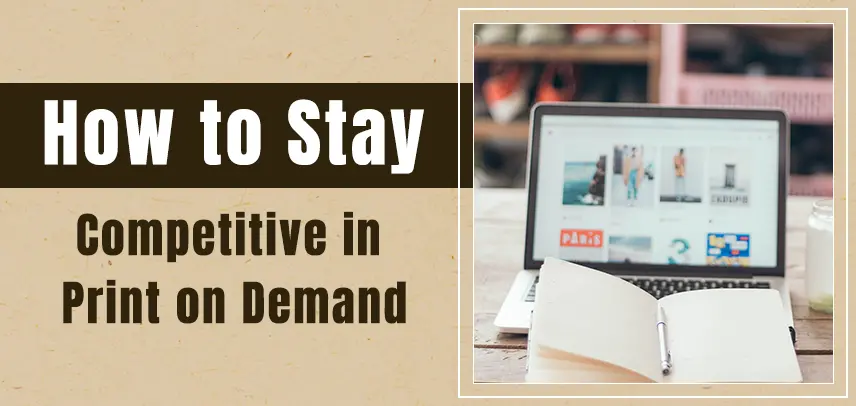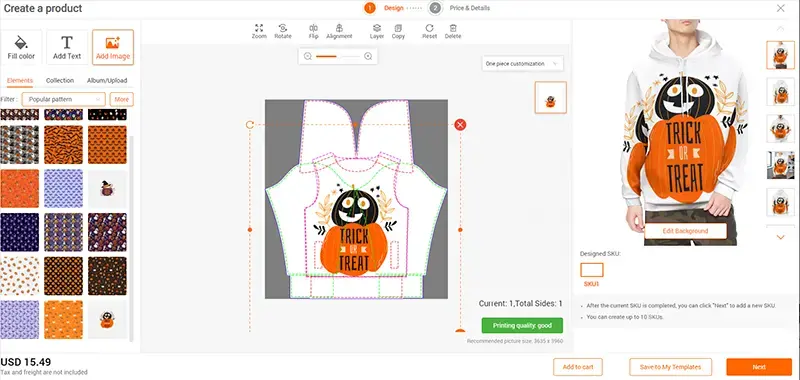
Adapting to Market Changes: Staying Competitive in print on demand
Understanding Market Trends
To stay ahead of the competition, print on demand business owners need to closely follow industry trends. Researching popular print on demand niches to find growth opportunities is important. Analyzing competitors to see what products and services they offer is also key. Following print on demand news sites and social media influencers provides insight into the latest developments. Understanding where the market is heading allows businesses to pivot before their competitors.
Offering Personalized Products
One key trend is the demand for personalized products. Consumers increasingly want unique items tailored to their style and interests. print on demand companies should focus on easy customization options. Customers can have their own print on demand t-shirts, print on demand mugs, and other products. Providing user-friendly customization tools on e-commerce sites is important. Working with designers to create templates customers can customize builds business. Personalized products not only boost sales, they also build brand loyalty.

Harnessing the Power of Social Media
Leveraging social media expands a print on demand brand’s reach exponentially. Sharing product images, process videos, and behind-the-scenes content engages followers. Responding to comments and messages interacts with followers. Running giveaways and contests gains likes and follows. Influencer marketing collaborations expose brands to new audiences. Hashtags help products surface in niche communities. Platforms like Pinterest, Instagram, and TikTok are especially effective for showcasing visual print on demand products. A strong social media strategy keeps brands relevant and discoverable.
Optimizing for E-Commerce Sales
While social platforms are great for awareness, e-commerce platforms drive sales. This is where platforms like Etsy, Shopify, and WooCommerce come into play. In optimizing for e-commerce sales, consider your platform carefully.
Etsy offers quick exposure and is best for small businesses, but it limits customization options. Shopify is a customizable, all-in-one platform ideal for medium to large businesses willing to pay a premium. WooCommerce provides maximum control at a low upfront cost but demands technical expertise, making it suited for those who want full oversight of their e-commerce environment.
Choose the platform that aligns with your business size and technical capabilities. Ensuring online shops have high-quality product photos and detailed descriptions builds trust. Including customer reviews also builds trust. Making the checkout process quick and easy reduces friction. Providing multiple shipping options satisfies customers. Integrating print on demand APIs with sales channels like Shopify enables smoother order fulfillment. Improving SEO ranks higher in product searches. Email and retargeting ads remind customers about unpurchased items. Smart e-commerce tactics increase conversion rates and repeat business.

Specializing in a Profitable Niche
Finding and dominating a specific niche is key for print on demand success. Instead of appealing to everyone, become the go-to shop for a specialized market. Catering to car enthusiasts, pet lovers, foodies or other communities with niche designs allows premium pricing with less competition. Becoming a category leader builds authority and loyalty. Once established as an authority, expanding into related niches becomes easier. Starting with deep expertise in a single niche provides focus.
Offering Excellent Customer Service
In a crowded market, good customer service sets businesses apart. Being available to answer buyer questions and resolve issues quickly builds goodwill. Providing easy self-service options like FAQs and knowledge bases is convenient. Automating emails to update customers on order status improves communication. Seeking feedback through surveys and reviews provides insights. Training support staff to handle problems with empathy satisfies customers. Delivering on promises like shipping time estimates increases trust. Compensating appropriately for mistakes reassures customers. In the age of online reviews, customer service matters more than ever. Going above and beyond builds positive word-of-mouth.
Adapting Pricing Strategically
Keeping up with material and supply costs and updating pricing accordingly is prudent. Running promotions like limited-time discounts boosts sales. Offering tiered pricing for bulk orders from corporate clients can drive revenue. Maintaining profit margins by adding premium features like faster shipping, gift wrapping, etc. balances value. The key is balancing affordability and profitability while remaining competitive. Monitoring competitors’ pricing and sales performance provides market data. Adjusting prices gradually based on data instead of emotions enables sound decisions. The right pricing strategy takes experimentation and analysis.
Taking Advantage of Technology
Emerging technologies open up new opportunities in print on demand. 3D printing enables products like phone cases and figurines. Direct-to-garment printers allow stunning full-color apparel. POD automation speeds up order processing, something made even more efficient by Shopify’s range of plugins and WooCommerce’s open-source flexibility. POD automation speeds up order processing. Photorealistic digital mockups vividly showcase final products. Customer experience apps provide real-time support. Turnkey solutions like Spreadshirt and Printful simplify getting started, especially when integrated with platforms like Etsy for immediate market reach. Combining innovation with a human touch gives print on demand brands an advantage.
The print on demand space will continue evolving rapidly. Businesses must stay agile and proactive to find success in this dynamic industry. By keeping up with trends, optimizing operations, and focusing on customer needs, print on demand companies can adapt to market changes and thrive. The demand for customized, unique products shows no signs of slowing down, offering immense opportunities for strategic entrepreneurs. A special mention goes to sustainability, for it is becoming increasingly important. The POD model inherently supports eco-friendly practices, as products are only made when ordered. Leveraging this aspect can provide an additional competitive edge in today’s environmentally-conscious market.




